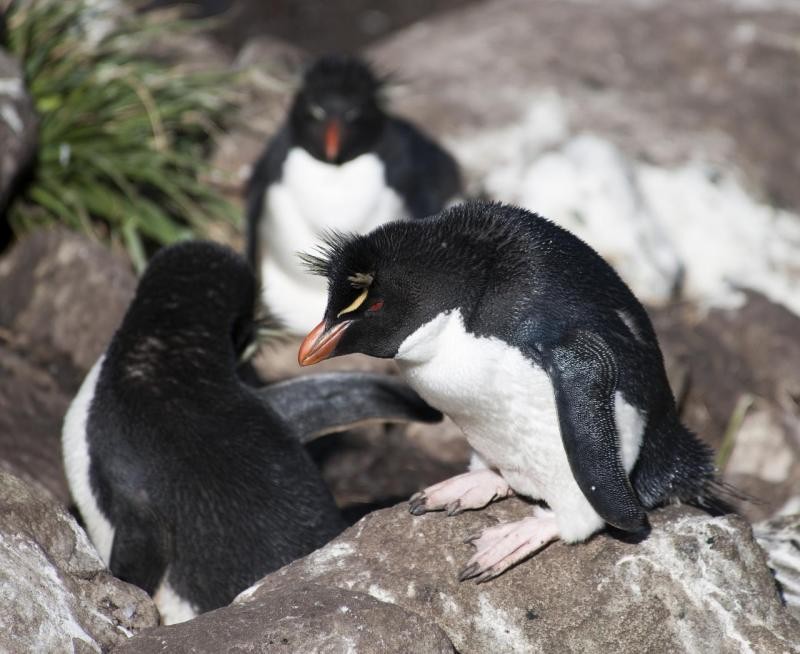Southern Rockhopper Penguin
A species of Crested Penguins Scientific name : Eudyptes chrysocome Genus : Crested Penguins
Southern Rockhopper Penguin, A species of Crested Penguins
Botanical name: Eudyptes chrysocome
Genus: Crested Penguins
Content
Description People often ask General Info
Description
This is the smallest yellow-crested, black-and-white penguin in the genus Eudyptes. It reaches a length of 45–58 cm (18–23 in) and typically weighs 2–3.4 kg (4.4–7.5 lb), although there are records of exceptionally large rockhoppers weighing 4.5 kg (9.9 lb). It has slate-grey upper parts and has straight, bright yellow eyebrows ending in long yellowish plumes projecting sideways behind a red eye. 
Size
62 cm
Life Expectancy
15 years
Nest Placement
Ground
Feeding Habits
Southern Rockhopper Penguin's diet primarily consists of euphausiids, amphipods, fish, and cephalopods. They forage by diving and exhibit unique adaptations for underwater hunting. Preference for specific prey types sets them apart.
Habitat
Southern Rockhopper Penguin predominantly inhabits marine and pelagic regions with a broader geographical distribution across subantarctic environments. These birds are typically found on rocky shores, cliffs, and slopes strewn with scree or lava flows, often amidst tussac grass. Their nests are strategically located close to the coastline, ranging from sea-level up to the tops of cliffs. Southern Rockhopper Penguin's foraging areas are offshore, indicating a wide-ranging temperature tolerance compared to its congeners.
Dite type
Piscivorous
People often ask
General Info
Feeding Habits
Bird food type
Behavior
Their common name refers to the fact that, unlike many other penguins which get around obstacles by sliding on their bellies or by awkward climbing using their flipper-like wings as aid, rockhoppers will try to jump over boulders and across cracks. This behaviour is by no means unique to this species however - at least the other "crested" penguins of the genus Eudyptes hop around rocks too. But the rockhopper's congeners occur on remote islands in the New Zealand region, whereas the rockhopper penguins are found in places that were visited by explorers and whalers since the Early Modern era. Hence, it is this particular species in which this behaviour was first noted. Their breeding colonies are located from sea-level to cliff-tops and sometimes inland. Their breeding season starts in September and ends in November. Two eggs are laid but only one is usually incubated. Incubation lasts 35 days and their chicks are brooded for 26 days. 
Species Status
The southern rockhopper penguin group is classified as vulnerable by the IUCN. Its population has declined by about one-third in the last thirty years. This decline has earned them the classification of a vulnerable species by the IUCN. Threats to their population include commercial fishing and oil spills. With the approval of the European Association of Zoos and Aquaria (EAZA), Drusillas Park in East Sussex holds the studbook for rockhopper penguins in Europe. Zoo manager Sue Woodgate has specialist knowledge of the species, so the zoo is responsible for co-ordinating the movements of penguins within zoos in Europe to take part in breeding programmes and offer their advice and information about the species. 
Scientific Classification
Phylum
Chordates Class
Birds Order
Penguins Family
Penguins Genus
Crested Penguins Species
Southern Rockhopper Penguin 